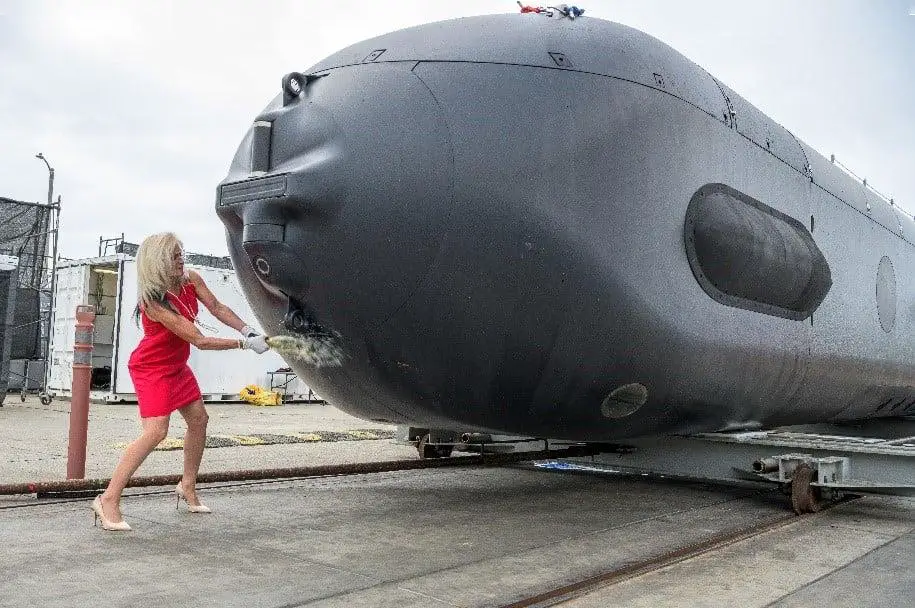However, it is more likely the first Virginia for Australia will be in 2046 due to the calculations below on the delayed, higher priority, Columbia-class SSBN program which shares supply chains, shipyards and work forces with the third priority Virginia program.
The production of 1.1 “standard” Virginias per year is likely to reduce to 0.8 Block Vs per year (ie. one every 15 months) starting with the Block V USS Oklahoma's expected commissioning in 2030-31 https://en.wikipedia.org/wiki/Virginia-class_submarine#Boats_in_class .
There is also competition from the second priority, delayed - Ford-class carrier construction program at HII's submarine/shipyard complex in thee state of Virginia.
The measuring stick of "deliveries" of Columbias doesn't mean actual commissioning of Columbias. First of class (Columbia) may experience 3 years of pre-commissioning tests (and bug fixing) after delivery to the USN.
In early 2025 USN Rear Adm. Todd Weeks, Program Executive Officer for Strategic Submarines advised the 12 Columbia class delivery or commissioning(?) is to be:
USS Columbia (SSBN-826) in 2029
USS Wisconsin (SSBN-827) in 2032
USS Groton (SSBN-828) in 2034
From USS Grotton Columbia-class delivery will optimistically be one SSBN per year, hence SSBN-829 in 2035.
The one SSBN per year drumbeat will mean less than one standard Virginia delivered per year. So then to the rest of the Columbias:
SSBN-830 2036
SSBN-831 2037
SSBN-832 2038
SSBN-833 2039
SSBN-834 2040
SSBN-835 2041
SSBN-836 2042
SSBN-837 2043
It is only after the top priority Columbias are completed that (from 2044) a few years of 2 to 3 Virginias constructed per year may permit one used Virginia to Australia in 2046.
More details: “Navy Columbia (SSBN-826) Class Ballistic Missile Submarine Program: Background and Issues for Congress: Updated September 25, 2025 Congressional Research Service https://crsreports.congress.gov CRN R41129 https://www.documentcloud.org/documents/26173199-columbiaprogramcrs/ “
So the first Virginia Australia is likely to receive is one Very second-hand one in 2046.
The UK’s SSN-AUKUS development schedule is likely even more delayed given the UKs chronic problems with the PWR2 reactor and piping corrosion and how to avoid this in a miniaturised PWR3 for SSN-AUKUS.



.jpg/1920px-CNO_Adm._Lisa_Franchetti_speaks_in_front_of_Boeing%E2%80%99s_Orca_Extra_Large_Unmanned_Undersea_Vehicle_(cropped).jpg)

